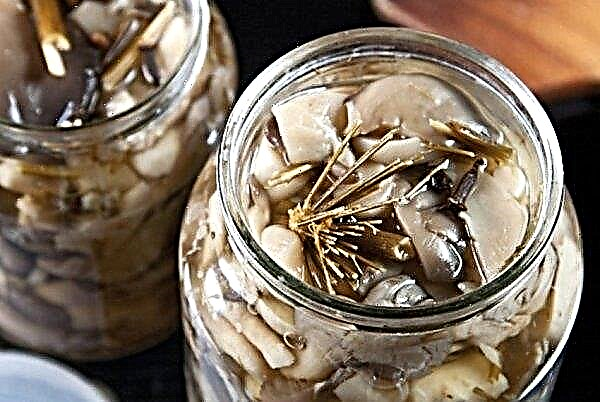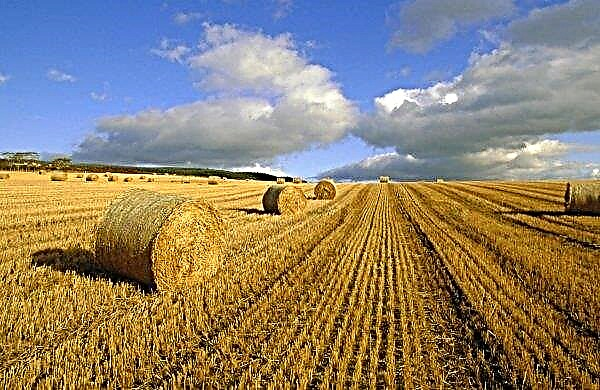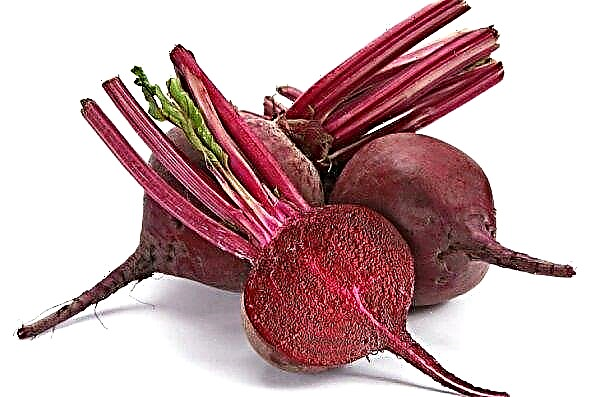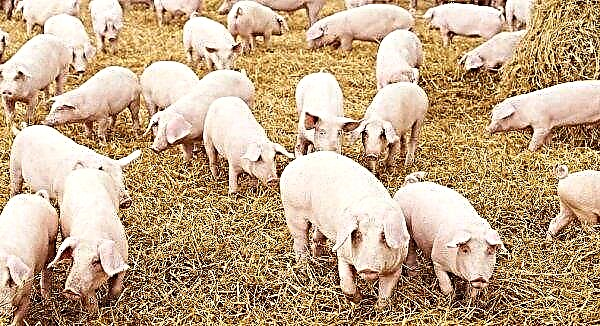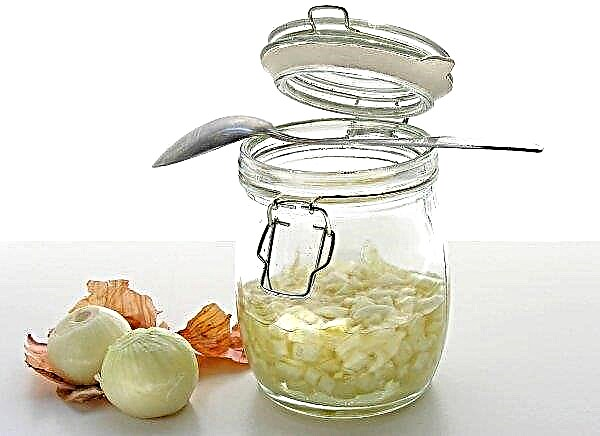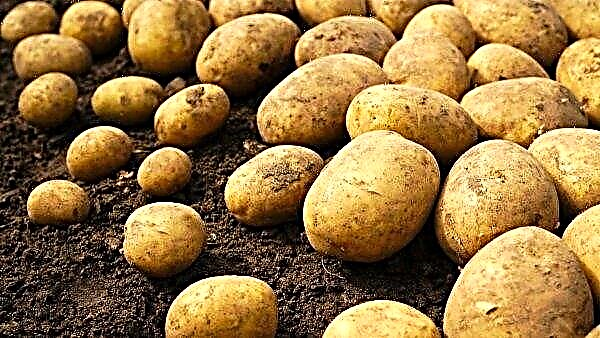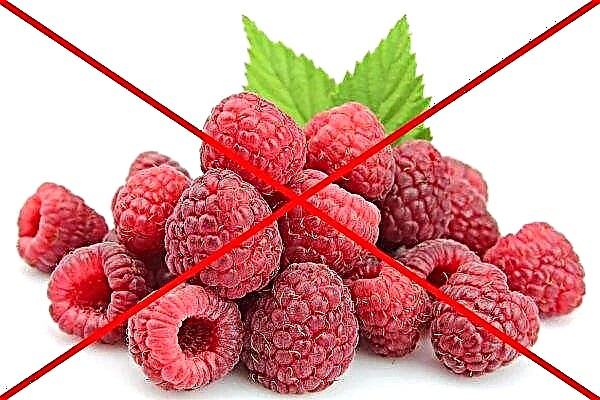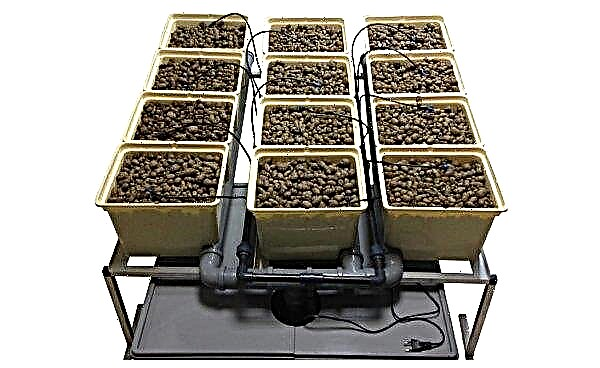The greenhouse is designed to receive ripe fruits, in this case, tomatoes, at an earlier date than in the open ground. If the pigmentation of tomato fruits in the greenhouse is delayed, it means that some agrotechnical rules have been violated, which will be discussed in more detail in the article.
Why tomatoes in the greenhouse are slowly turning red
After a maximum of a month has elapsed since the formation of the ovary, the tomato is supposed to start ripening by nature, acquiring its conditioning color in 12–20 days.
If this does not happen, then the following factors have been violated - together or separately:
- temperature conditions of growth;
- soil nutrient balance;
- humidity mode;
- lighting conditions;
- acid-base balance in the soil.
Did you know? Although it is believed that tomatoes were native to South America, from where they came to Europe and Asia, recently in China, over 2000 years old, tomato seeds were found in a burial place that is more than 2000 years old. They not only looked beautiful in appearance, but also sprouted.
Violation of growing conditions
The most often negative effect on the delayed pigmentation of tomato fruits is exceeded by the temperature regime in the greenhouse beyond + 15–35 ° C, which leads to a failure of lycopene metabolism in tomatoes. As you know, it is this natural pigment that colors the tomatoes in their usual color.
Excessive air humidity in the greenhouse and insufficient light also adversely affect the pigmentation of tomato fruits.

Nutrient deficiency
Lack of light with an excess of air humidity, as mentioned above, make tomatoes consume less nitrogen and need more potassium.
Meanwhile, the organic fertilizers that feed tomatoes when planting seedlings in a greenhouse supply mainly nitrogen. As a result, there is an overabundance of it in the soil with a simultaneous lack of potassium, while during flowering, the formation of ovaries, and fruit growth, this mineral, as well as phosphorus and iodine, are extremely needed. Their deficiency inhibits the staining of tomato fruits in a significant way.
Other reasons
A serious counteraction to the timely reddening of tomatoes in the greenhouse is also exerted by:
- excessive thickening of tomato bushes green mass and an excess of ovaries on them;
- overabundance of ultraviolet raysfalling on the fruits and taking away their color;
- acidic soil (at 4–5 pH), which makes it difficult for nutrients to enter the tomato bush;
- alkaline environment (at 8–9 pH), which impedes the assimilation of useful substances by the plant;
- soil temperaturegoing beyond the required + 17–20 ° C.
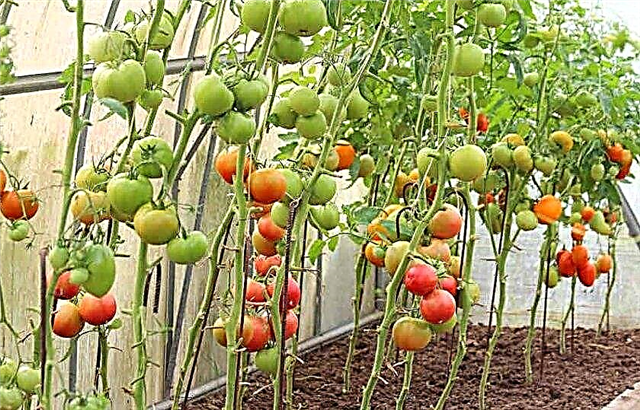
What to make tomatoes blush faster in the greenhouse
In order to accelerate the reddening of tomato fruits in the greenhouse, it is necessary to scrupulously adhere to the agrotechnical rules for the cultivation of these vegetables and eliminate the causes that inhibit the process of their pigmentation.
Did you know? Today in the world there are at least 10,000 different varieties of tomatoes, the smallest of which does not even reach 2 cm. In addition, there are tomato varieties whose fruits reach a weight of 1.5 kg.
Topping and pinching the tops
The correct illumination of the tomatoes on it and the optimal distribution of nutrients among the green mass and fruits depend on how well the tomato bush is formed.

The competent formation of a tomato bush with the help of pinching and pinching the tops depends on the type of tomato:
- indeterminate varietiesforming in one stem, exempt from all lateral runs weekly, and in the first half of August cut off the top of the bush, spaced 3 leaves from the upper fruit bunch, at the same time eliminate all flowers and ovaries the size of a cherry;
- semi-determinant variety formed in two stems, for which they use the lower stepson, and eliminate the rest, as soon as they appear. The same thing happens with the top, if by mid-August the growth of the bush does not stop on its own;
- determinant varieties, independently stopping growth at a certain height of the three-trunked bush, they do not need to pinch the tops, however, axillary leaves undergo pinching as they appear;
- superdeterminant tomatoes Neither stepsoning, nor pinching of the tops are needed.
Important! Tomato bushes should not be formed immediately after watering or fertilizing. After these procedures, at least 2 days should pass.
Of great importance for the well-being of plants are the correct actions when removing stepsons:
- Shoots growing from leaf sinuses need to be broken off with your fingers and it is not recommended to cut with scissors.
- The best time for pinching is an early and warm morning, because in the remaining daytime the wounds at the breakage sites have time to dry out and do not rot.
- The first time stepsoning is carried out half a month later after planting the seedlings in the greenhouse, after which the operation is repeated every 8-12 days.
- Do not break out the axillary shoot completely to avoid the appearance of a new process. It is best to leave in the leaf bosom part of the shoot 2 cm long.
- It is not necessary to allow the stepsons to grow over a length of more than 7 cm, otherwise the plant may get stressed during the stepsoning.
- In order to prevent the infection from entering the place of the shoot breakage, it is necessary to moisten the fingers with manganese solution during pinching.
Video: rules for planting tomatoes in a greenhouse
Removing new flowers
After the formation of the bulk of the fruit, the appearance of new flowers and ovaries is not desirable. From the end of summer, when this happens, before the onset of cold weather, the new ovaries simply do not have time to turn into full-fledged fruits, and even more so, to turn red. This is especially true for stunted and medium-sized shrubs, so flowering buds and small ovaries are carefully cut with a sharp knife or scissors that are pre-disinfected in a potassium permanganate solution.
Climate recovery
During the pollination of flowers, the formation of ovaries and their development, the optimal temperature in the daytime in the greenhouse should be between + 24 ° C and + 27 ° C. After the fruits gain the required mass, for their full filling, the temperature in the greenhouse can be raised, but so that it does not exceed + 35 ° C.
Since the end of summer, when daylight hours are noticeably shortened, artificial lighting is required in the greenhouse.
The optimum air humidity when growing tomatoes in a greenhouse is considered to be an interval between 60% and 70%. At higher humidity, the growth and development of plants is inhibited, and at lower humidity, the qualitative pollination of flowers is hindered.

Top dressing
As already emphasized, the excessive presence of nitrates in the soil stimulates violent growth of green mass and simultaneously inhibits pigmentation of fruits.
At the stage of setting, formation and ripening of fruits, minerals in the form of:
- potassium;
- phosphorus;
- iodine.
With their deficiency, it is best to use folk remedies - for example, iodine-ash feeding.
To prepare it, do the following:
- Pour two liter cans of chopped wood ash into a container with a capacity of at least 12 liters.
- Pour 5 liters of boiling water on top.
- After the mixture cools down, add another 5 liters of water to it.
- Cover the container and put in the shade for a week.
- Then pour the resulting ash infusion into another bucket and add 20 ml of pharmacy iodine solution and 10 g of boric acid to it.
- Before use, add 9 liters of water heated to a greenhouse temperature to each liter of solution.
- Pour up to 1 liter of infusion under each tomato bush.
Consider how to water a tomato bush during the ripening of its fruits.
For this purpose, you can prepare an extract from superphosphate:
- Pour 100 g of superphosphate in granules with 5 cups of boiled water.
- After thorough mixing, leave the mixture for a day, during which it is mixed several times.
- After a day, separate the resulting suspension from the precipitate.
- Then dissolve 20 tablespoons of the extract in 3 liters of water.
- ¾ Dilute the cup of the resulting solution in a bucket of water and pour tomatoes at the rate of 1 liter for each tomato bush with this liquid.
What can not be done when ripening tomatoes
In order to have plenty of ripened tomatoes in the greenhouse on time, you also need to know what should not be done.

During the ripening period of the fruits and the acquisition of the required color, so that they successfully sang, it is highly not recommended:
- water abundantly bushes;
- feed them with nitrates;
- in hot weather, arrange the effect of a steam room in the greenhouse.
Important! If in the second half of the summer you don’t stop feeding tomato bushes with nitrogen-rich organic fertilizers in the form of mullein or chicken droppings, this will not only slow down the pigmentation of the fruits, but also worsen their taste.
To take full advantage of the greenhouse, which allows you to get ripened tomatoes to the table earlier than in the open ground, and not to miss this opportunity, you should know the simple agrotechnical rules and carefully follow them.


